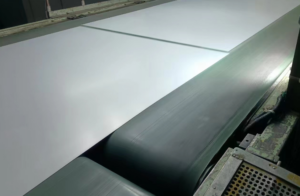Steel strips, narrow and elongated sheets of steel, play a pivotal role in various industries, serving as critical components in mechanical parts, construction materials, and more. Given their widespread application, it’s imperative to understand the dị iche iche nke ígwè ibe available and their unique characteristics.

Kedu ụdị mpempe ígwè dị iche iche?
One of the primary classifications of steel strips is based on the material composition. Common carbon ígwè strips, for instance, are made from plain carbon steel, exhibiting excellent mechanical properties, wear resistance, and corrosion resistance. These strips are widely used in mechanical manufacturing and the construction industry due to their cost-effectiveness and reliability. On the other hand, stainless steel strips, as the name suggests, are composed of stainless steel, which offers superior corrosion resistance, sterility, and high strength. This type of steel strip finds its application in high-tech sectors like the food industry, aerospace, and medical devices.
Processing methods also determine the types of steel strips. Hot-rolled steel strips are produced through the hot rolling process, resulting in a rougher surface finish but excellent plasticity and workability. These strips are often utilized in areas that require high strength and wear resistance, such as in building structures, shipbuilding, and petrochemical industries. Conversely, ibe nchara nke oyi na-atụ undergo cold rolling, yielding a smoother and more precise surface, making them ideal for applications that require intricate shapes and high precision, like automotive parts and electronic components.
The thickness and width of steel strips also contribute to their categorization. Thin steel strips, with a thickness not exceeding 4mm, are lightweight and easy to process, often used in packaging and decorative applications. Thick steel strips, on the other hand, possess greater structural integrity and are commonly employed in heavy-duty construction and machinery. Similarly, wide steel strips are suitable for larger-scale applications like bridges and buildings, while narrow steel strips are more convenient for smaller, intricate parts.
Furthermore, steel strips can be categorized based on their surface finish. Some strips have a raw, mill finish, while others may be coated or plated with materials like zinc to enhance corrosion resistance. Zinc-coated steel strips, for example, provide an additional layer of protection against rust, making them suitable for outdoor use in environments prone to corrosion.
Lastly, steel strips are also classified according to their intended use. General-purpose steel strips are suitable for a wide range of applications, while special-purpose strips are designed for specific uses, such as in the manufacture of oil drums, welding pipes, or packaging materials. These specialized steel strips often have unique chemical compositions or processing techniques that cater to their specific applications.
mmechi
In conclusion, steel strips encompass a diverse range of types, each with its unique properties and applications. Understanding the different types of steel strips and their characteristics is crucial for selecting the most suitable material for a given project or application.
Thank you for reading our article and we hope it can help you to have a better understanding of different types of steel strips. If you are looking for stainless steel strip suppliers online now, we would advise you to visit Sino igwe anaghị agba nchara.
Dị ka onye na-eweta ngwaahịa igwe anaghị agba nchara sitere na Shanghai China, Sino igwe anaghị agba nchara na-enye ndị ahịa oke mma. igwe anaghị agba nchara, igwe anaghị agba nchara, igwe anaghị agba nchara ịchọ mma Ibé akwụkwọ, tubes igwe anaghị agba nchara, igwe anaghị agba nchara ọkpọkọ, efere igwe anaghị agba nchara, na igwe anaghị agba nchara na ọnụ ahịa dị oke asọmpi.
 :+86-18621535697
:+86-18621535697  :export81@huaxia-intl.com
:export81@huaxia-intl.com